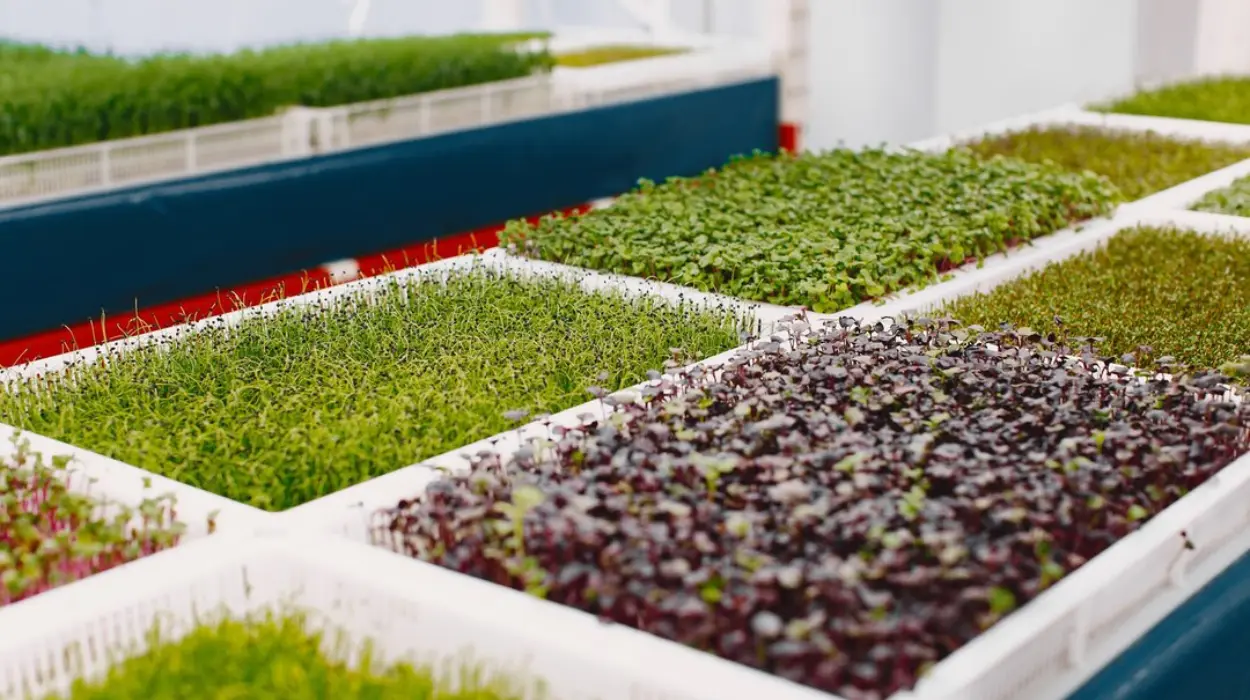
UK Microgreens Market Flourishes: A Nutrient-Packed Revolution in Urban Farming and Healthy Living
Microgreens, once considered mere garnishes, have evolved into a powerful symbol of health, sustainability, and innovation in the UK’s food landscape. Valued at USD 226.8 million in 2023, the UK microgreens market is projected to more than double to USD 491.4 million by 2030, reflecting a growing consumer appetite for nutrient-dense, locally sourced foods. This surge is part of a global trend that sees microgreens transforming commercial farming, home gardening, and culinary practices alike, fueled by their rich nutritional profile and sustainable production methods.
Explosive Market Growth: UK and Global Perspectives
The microgreens market is experiencing unprecedented expansion worldwide. Globally, the market value soared from USD 1.73 billion in 2023 to USD 3.24 billion in 2024, with forecasts estimating growth to USD 8.25 billion by 2032 at a compound annual growth rate (CAGR) of around 10.5%. Within Europe, which dominates the sector with a 40.3% market share in 2025, the microgreens market was valued at USD 662.99 million in 2024 and is expected to reach USD 1.21 billion by 2030. The UK market mirrors this upward trajectory, driven by increasing health awareness, urban farming adoption, and demand for sustainable food options.
Key Market Drivers
- Health Consciousness: Consumers are increasingly seeking foods rich in vitamins, minerals, antioxidants, and phytochemicals. Microgreens, harvested at the seedling stage, pack higher nutrient concentrations than mature vegetables, making them attractive functional foods.
- Sustainability and Urban Agriculture: Indoor and vertical farming methods, which allow year-round, space-efficient production, are gaining traction in the UK. These methods reduce land use and pesticide reliance, aligning with eco-friendly consumer values.
- Retail Expansion: Supermarkets and health food stores now allocate significant shelf space to microgreens, benefiting from their longer shelf life (7-10 days) compared to mature greens, facilitating wider consumer access.
- Culinary and Cosmetic Industry Adoption: Beyond home kitchens and restaurants, microgreens are increasingly used in food service and cosmetic products, encouraging innovation and diversification.
Nutritional Powerhouses: Health Benefits of Microgreens
Microgreens are celebrated for their dense nutrient profile. Studies highlight their superiority in vitamins such as K1 and C, carotenoids, phenolic compounds, and glucosinolates compared to mature plants. Specific varieties offer targeted health benefits:
- Broccoli Microgreens: Linked to weight management and cardiovascular health by reducing fat tissue and lowering LDL cholesterol.
- Fenugreek Microgreens: High in iron, beneficial for preventing and treating iron deficiency anemia.
- Cruciferous Microgreens (Broccoli, Cauliflower, Kale): Potential cancer-preventive properties, though long-term human studies are pending.
- Anti-Diabetic Effects: Some microgreens may improve insulin resistance and lower blood sugar levels, supporting diabetes management.
These health attributes position microgreens as promising superfoods that complement traditional diets, particularly for consumers focused on disease prevention and wellness.
The Rise of Indoor and Vertical Farming in the UK
Indoor farming, including vertical farming, accounts for approximately 20.9% of microgreens production in 2025, enabling sustainable, climate-independent cultivation. This approach stacks crops vertically in controlled environments, maximizing yield per square meter while reducing water use and labor costs. The UK government’s 2024 report highlighted a 15% rise in total farming income, with regions like the East of England leading production, signaling strong institutional support for innovative farming methods.
Microgreens’ short growth cycle (12-14 days) and minimal space requirements make them ideal for urban farming initiatives, community gardens, and home growers, fostering food security and local economic development.
Consumer Acceptance and Culinary Trends
Microgreens have transcended their traditional role as decorative garnishes to become essential ingredients in modern cuisine. Their vibrant colors, intense flavors, and nutritional benefits have won consumer favor in salads, smoothies, sandwiches, and gourmet dishes. Studies confirm high acceptance of varieties such as broccoli, red cabbage, arugula, and pea tendrils for taste and texture, supporting their integration into everyday meals.
Retailers capitalize on this trend by offering pre-packaged microgreens with extended shelf life, catering to busy, health-conscious consumers seeking convenient nutrition.
Challenges and Future Outlook
While the microgreens market is poised for robust growth, challenges include:
- Cost and Accessibility: Microgreens can be more expensive than mature vegetables, potentially limiting widespread adoption among lower-income groups.
- Supply Chain and Quality Control: Ensuring consistent quality and organic certification requires investment and regulation.
- Research Gaps: Long-term clinical studies on health benefits are still needed to solidify microgreens’ role in disease prevention.
Nonetheless, increasing investments in research and development, product innovation, and eco-friendly packaging are expected to drive market expansion. The UK’s alignment with sustainable farming goals and consumer demand for premium, nutrient-rich foods positions microgreens as a key player in the future of agriculture and nutrition.
In summary, the UK microgreens market exemplifies a broader global shift toward healthier, sustainable, and innovative food systems. With revenues set to more than double by 2030, microgreens are no longer niche curiosities but vital contributors to flourishing lives, urban agriculture, and eco-conscious consumerism. As awareness grows and farming technologies advance, these tiny greens are poised to make a big impact on the UK’s food landscape and beyond.



